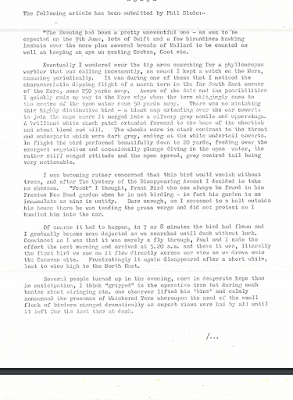Regular readers will know of recent blog posts and the often poor catches of Project Linnet.
Before today and despite a good number of visits, our total caught during the winter of 2018/2019 was a miserly 87 only; this in comparison to the winter of 2016/17 when we caught 212 and the winter of 2017/18 when we caught 242. Three of these 541 Linnets proved to have links with northern Scotland, in two cases, the Northern Isles of Orkney and Shetland respectively.
In recent days I am grateful to two Scottish ornithologist ringers Tom Dougall and Bob Swann, who not only shared their own experiences and thoughts about Linnets, but offered helpful advice on improving our catch at Gulf Lane. Here is a link to a very interesting and useful paper about Linnets, first published in 2014 - “Movements of Linnets Linaria cannabina in northern Scotland. - Movements of Linnets in Northern Scotland
Most interestingly, Bob remarked to me that “Linnets are undoubtedly a species where the more people that are catching them the more information you get. When we first started catching, all our movements were between Orkney and Highland as that was where the ringers were. When folk started catching in Tayside and then Lothian they started catching our birds. Unfortunately when our study was going there were very few ringers in England catching Linnets in winter and this partly explains the lack of long distance movements down to England.”
So Andy and I started today needing to catch up on numbers but keen to continue with our investigation of the proportion of Scottish Linnets amongst local wintering birds. This is especially useful as it appears that we may be the only ringers in Lancashire, possibly the whole of North West England who actively target wintering and “Red-listed” Linnets.
The numbers of Linnets here at Gulf Lane has dropped from a peak of 300 in December to around 200 in recent weeks and days. So we were reasonably happy to catch 10 new Linnets to bring this winter’s total close to the one hundred mark. More than happy to report also that Tom’s advice on an alternative catching method worked, despite the Linnets’ usual skittishness. Their nervous behaviour was not helped by a Sparrowhawk which at one point shot fast and low, legs outstretched, and through the flock but without success.
Linnet
Sparrowhawk
None of today’s Linnets showed much hint of Scottish variance with all wing lengths up to 82mm and no obvious grey headed birds.
When finally the morning air warmed up a little we heard out first singing Skylark of the year; a closer look revealed a pair of Skylark in the annual location alongside the ditch in the corner of the adjacent field. Could it be that just like the Skylark and so many garden birds now in song, the Linnet flock has reduced in size as some individuals seek to establish territories in the wider countryside?
Skylark
The next week or more will decide but first we have to negotiate the next Atlantic storm waiting in the wings to ruin the weekend.
Friday 8th February 2019
Stay tuned folks. It's just a spot of wind.

















































.jpg)












